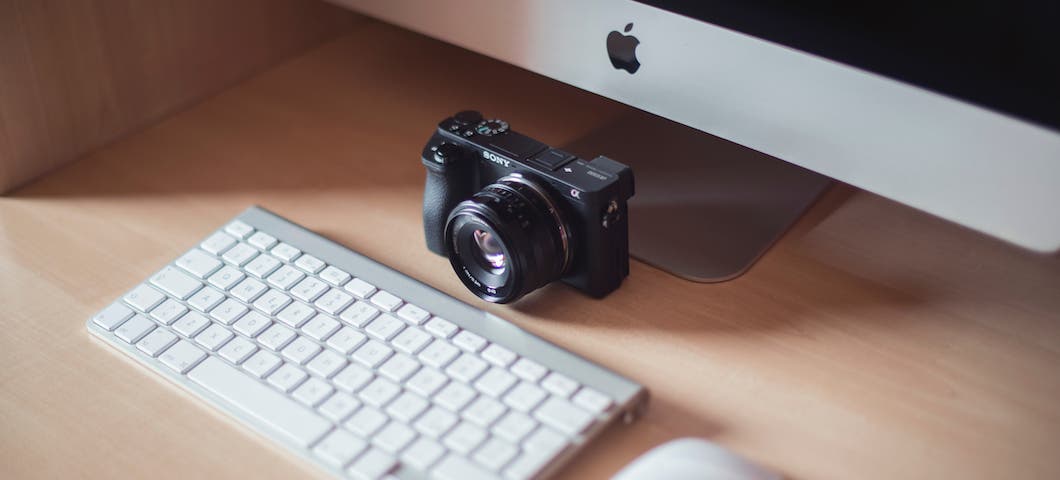As photographers, we express ourselves visually through our photographs and may shrivel up at the thought of expressing ourselves through writing – especially writing about our work. There may come a time, however, where you don’t have a choice because a resume and/or artist statement may be required for an exhibition, to apply for admission into a visual arts program, to apply for a teaching position, to apply for a grant or some other reason.
Writing your photographer’s resume and artist statement does not have to be a painful process. Below are some tips for creating a successful photography resume and artist statement.
Your photographer’s resume
Like any resume, a photographer’s resume is a fact list regarding your background — in this case — as a photographer. It’s important to keep your resume under two pages.

Be sure to include only information relevant to the purpose of the resume. For instance, if I’m applying for a photography exhibition, I do not include my educational background in legal studies because it’s irrelevant to my photography background.
What to include:
- Contact information (your name, address, phone number, email and, if available, your website address)
- Artistic and/or photography education
- Any major clients you’ve worked with (if applicable)
- Exhibitions you’ve participated in (both group and solo) (if any)
- Awards (if any)
- Professional affiliations
Optional items you might include:
If you have been fortunate enough to have these experiences, you might also include any of the following:
- Publications where your photography has been published
- Grants or fellowships you have received toward your work
- Photography teaching positions
- Any public lectures you may have presented involving photography
- Curatorial projects you have been involved in
- Juror or judge positions you’ve held in photography competitions
Emerging photographers:
New photographers who run into the dilemma of not having much experience to include on a resume might consider submitting an artist bio instead, if there is an option to do so. An artist bio showcases your background, but in more of a sentence – rather than a list – format.

An artist bio should describe who you are and be written in the third person. It can include personal details such as:
- Where you’re from and where you live now
- How and where you learned photography
- What types of photographs you like to create
- Where you’ve shown your work
Whether you’re writing a photography resume or an artist bio, keep it short, relevant and to the point. Be sure to proofread it multiple times before submission.
Your artist statement:
An artist statement is a brief written glimpse into your unique story, creative process and motivations for creating the body of work of which it accompanies. These are an outlet for your viewers to get to know a little bit about what makes you tick when you’re creating your work. Many artists and photographers have a general artist statement and then create different artist statements exclusively for each body of work they show.

Things to consider when writing your artist statement:
An artist statement should be brief — between one and three paragraphs — and should be written in the first-person. It’s important to explain your work and process without over-explaining it. Simple and concise works best. Leave out your thoughts on how you think your work should make a viewer feel and don’t point out specific aspects of a picture. Let the viewer interpret your work the way they experience it themselves.
Getting started with your artist statement:
Writing an artist statement can seem like a daunting task, especially to those who hate to write or don’t know really know how to describe their work. Below are a few tips for generating a well-crafted artist statement.
1. Set aside time and a quiet, clean space to write.
2. On a piece of paper or word processor, list where you’re from, where you live now, how you learned photographed, how long long you’ve been shooting and what genres of photographs that you shoot.
3. Jot down what inspires you when you capture photos. You can have multiple inspirations such as other artists, compositional elements or colors.
4. If you’re writing an artist statement about a particular body of work, close your eyes and think back to when you took the photos. What were you thinking? How did you feel about the particular subjects or scenes?
5. Do you have a particular method that you use for shooting or that you used for shooting this particular body of work? Keep it brief, concise and easy to understand for the ordinary viewer.
Now that you have some informational and artistic aspects to work with and you can begin composing your artist statement. Be sure to proofread your statement several times – even allowing others to proofread it – before submitting it for viewers to read.
A final word:
You know yourself, your history, what inspires you and drives you to create photographs, but sometimes it’s necessary to have a photography resume handy to submit to a gallery considering your work, or to possibly apply for a grant or a photography teaching position. Consider writing a general artist statement that speaks about our overall body of work and compose individual art statements for each body of work you present giving your viewer insight into your vision as you may not always be around or available to speak about it yourself.






